How to Be Successful on Shopify: Complete Guide + 12 Tips for Success
After bouncing around tech start-ups and university literature programs, Joe has finally settled down as Billo’s Head of Content. Joe now spends his days writing ads about ads, teaching clients how to craft killer content, and combing through our web copy with a bold red Sharpie.
Tom Slipkus is an email strategist helping SaaS companies onboard users, reduce churn, and drive sales in the process. When he’s not digging through customer research or coming up with the perfect subject line, Tom also pens insightful articles about marketing and building lasting relationships with customers.

The ecommerce market is growing rapidly and is projected to reach a staggering $8 trillion in sales by 2027. With large retail stores like Walmart fully embracing ecommerce and platforms like Shopify making it easier than ever for anyone to open a store, it’s clear that the market for selling products online will continue to grow for many years to come.
But while there’s no shortage of ecommerce brands (Shopify alone has more than 2.3 million active stores), succeeding and becoming profitable is an entirely different story. The demand is there, but so is steep competition, and small ecommerce brands need to compete not just with direct competitor stores but with e-retail giants like Amazon and Walmart as well.
The good news? As many successful examples have shown, even niche Shopify stores can carve out a place in the market and achieve amazing results, given they follow the right strategies and avoid some of the common pitfalls.
That’s exactly what this guide is about. We’ll dig deep into things to avoid, practices to emulate, and the essential Shopify tips to implement if you want to maximize your chances for success.
Reasons Why Shopify Stores Fail
Only around 5-10% of Shopify stores succeed and are able to launch a profitable business. That means that for the majority of stores, all that time, effort, and investment goes to waste.
But what are the underlying reasons why the Shopify success rate is so low?
Let’s look at the most likely causes below.
1. Little Market Research and Planning
Perhaps the biggest differentiator in a Shopify store’s success takes place before the store is even built. Only by going through a thorough research and planning process can you expect to build a successful store, because the insights you gain will dictate every decision you make.
Unfortunately, most sellers are eager to start making sales as soon as possible and end up skipping or rushing through crucial steps of the research process. That results in not knowing who to target, bad product positioning, ineffective pricing, and a range of other issues that make it very difficult to compete against more established stores.
2. Not Understanding the Target Audience
Customers are at the center of figuring out how to be successful on Shopify. But if you don’t know what audience your product and brand cater to, you’ll end up with a generic store that doesn’t attract anyone.
On top of that, not knowing your ideal customers will make developing effective marketing strategies very difficult. You won’t know what pain points to address, or how to make your products stand out, and will have a hard time creating a customer experience your best buyers would be attracted to.
3. Generic Branding
46% of U.S. consumers are willing to pay more for brands they trust. And having a strong brand also plays a vital role in customer retention.
But without taking the time to understand the audience and establish clear values, new Shopify store owners typically end up with generic branding that doesn’t really say anything about what the business stands for.
At that point, the store is left competing on price, which is not a winning formula for success in the long term.
4. Lack of Social Proof
92% of consumers hesitate about purchasing if they don’t see a customer review. For Shopify stores that don’t yet have a widely recognized brand, having social proof is even more important.
However, most store owners don’t have a strategy for collecting and showcasing customer success stories. They might include reviews when they appear organically, but won’t have a way to proactively ask for reviews and deliberately include them on different pages to drive conversions during high-intent moments.
Without social proof, many potential buyers will likely end up buying from more established stores simply because they will have more trust-building social proof elements.
5. Outdated Marketing Strategies
The world of e-commerce is moving forward at a rapid pace. And while proven marketing strategies still work, most of them have evolved and require a more modern approach to be effective.
For example, while you can still rely on organic reach and SEO, having a social media presence is no longer optional. You need a way to engage your audience and get user-generated content to create demand for your products and show them in action. Strategies like influencer marketing are also key for getting traction and quickly building an audience interested in what you have to offer.
6. Unsustainable Pricing
A new Shopify store has limited options for getting noticed in the market. And many resort to lowering prices as a way to gain an edge and get initial traction. But while that can work in the beginning, having prices with too little margins is an unsustainable strategy that will eventually put the store out of business.
That’s because once a company’s main advantage becomes price, getting the customers to buy at more reasonable prices is going to be very difficult. That also makes it hard to offer good customer service, invest in marketing, or improve product quality, which will further damage the company’s reputation.

Signs of a Successful Shopify Store
Learning from the mistakes of others is a good way to set yourself up for success. But when figuring out how to be successful with Shopify, it can be just as valuable to look at the reasons why some stores do extraordinarily well.
Here are a few signs of a successful Shopify store to inspire you when starting a Shopify store.
Sign #1: Great Reviews
If you spot a highly successful Shopify store, chances are you’ll quickly notice a large amount of reviews that are featured on the site. Successful stores do a great job of leveraging the success stories of their customers, featuring them on the home page, on a separate reviews page, and product pages.
The best stores also continually look for ways to get more reviews and use them more effectively. They employ social proof tools to make it easier to collect and display reviews at various stages, and also use timely notifications to boost urgency and drive sales. When set up correctly, reviews can also be a powerful SEO tool, helping gain an edge over the competition and grab top spots for the most relevant keywords.
Sign #2: Strong Social Media Presence
Social media is an integral tool for growing your audience and interacting with customers. Ecommerce brands that have a large following on social media have a much easier time making sales because they have a huge platform for running promotions, introducing new products, showcasing their brand, and fostering engagement from the audience.
While developing a social media presence takes time, having a presence on platforms frequented by your audience is almost always worth the effort. And platforms like Instagram and TikTok are perfect for displaying your products in action and getting people excited to try them.
Sign #3: Good SEO Rankings
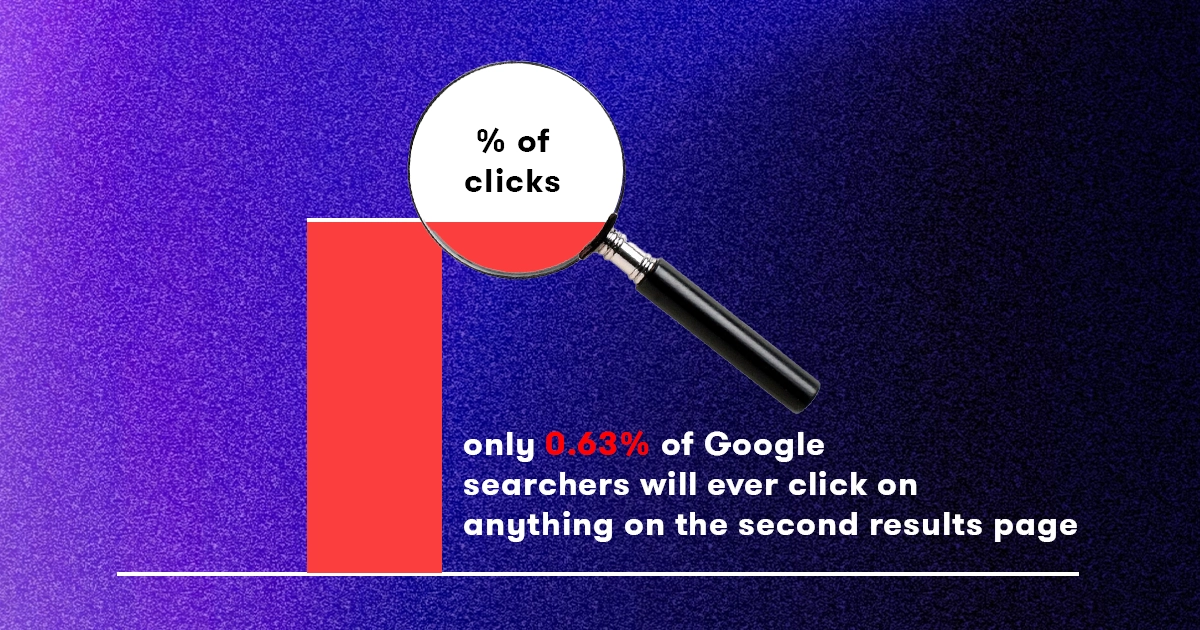
When someone types in a query into Google, they expect that the top results will most likely be the best match for what they’re looking for. In fact, only 0.63% of Google searchers will ever click on anything on the second results page.
That not only means that ranking at the top will deliver more quality traffic for the business. It also shows that the store is established and has an effective SEO strategy that they’ve been implementing for a while.
When you see an ecommerce store among the first results for competitive keywords, you can be almost certain that it’s doing well and is excelling among its competitors.
Sign #4: Great User Experience
Ecommerce websites are the digital version of a brick-and-mortar store. And many of the same principles apply when creating an online experience that customers will love.
Just as physical stores make the design and layout an integral part of the experience, so must ecommerce stores design a user interface that matches audience expectations and makes it easy to buy.
That starts with a beautiful and brand-consistent design, but it also encompasses having a seamless UX that anticipates customer needs and removes friction at every step.
Sign #5: Distinct Brand Experience
We already talked about how one of the reasons so many Shopify stores fail is that they don’t have a brand identity. But on the other end of the spectrum are the stores that truly excel and not only have a great brand presence but make it a central part of the customer experience.
Brands like Fishwife or Alfred take everyday products and completely reimagine how they could be presented, positioned, and sold to audiences looking for something authentic and fresh. These brands consider every detail of their branding, website, product design, and messaging to create a unified brand experience that becomes greater than the sum of its parts.
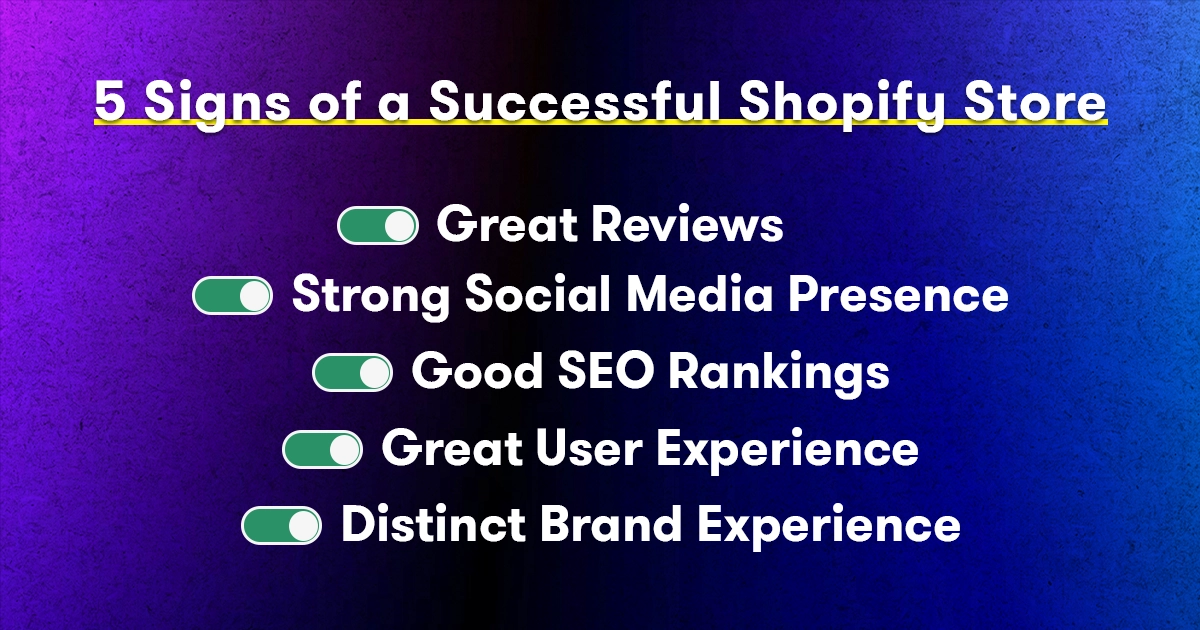
12 Essential Shopify Tips and Tricks You Need to Know
When building an ecommerce store on Shopify, you need to avoid the most common mistakes and learn from the success stories. But you also need to be strategic and develop a plan that encompasses marketing, branding, customer experience, and business optimization.
To help you get started, we compiled a comprehensive list of Shopify tips for beginners and experienced marketers alike, which should guide you as you create a store that has a good chance of taking off.
1. Craft a Compelling Brand Narrative
A great brand is more than just a logo and a color scheme. It immediately grabs the target customer’s attention, telling a story they are drawn to through visuals, messaging, aesthetics, values, and a unique selling proposition.
A key feature of a great brand narrative is the ability to create an emotional connection with the target audience. If you can create a brand that’s different from others and encompasses an idea that’s important to your buyers, you will have a much easier time carving out a place even in the most competitive markets.

2. Emphasize Data-Driven Optimization
The biggest advantage of established e-commerce brands might not be their long list of loyal customers or a proven track record. The most valuable asset they possess might actually be the knowledge they have accumulated about what works in their industry and how to use that information to gain an edge over the competition.
To achieve that sort of advantage, you need to take a more comprehensive approach to testing and making data-driven decisions about every aspect of your business. That means establishing key performance indicators (KPIs), performing timely tests to answer questions, and collecting a variety of data using analytics platforms to spot patterns and identify what works best.
When you have enough data to work with and know how to use it, you’ll always know what you need to improve next, can start any new campaign with confidence, and mitigate risks in every part of your business.
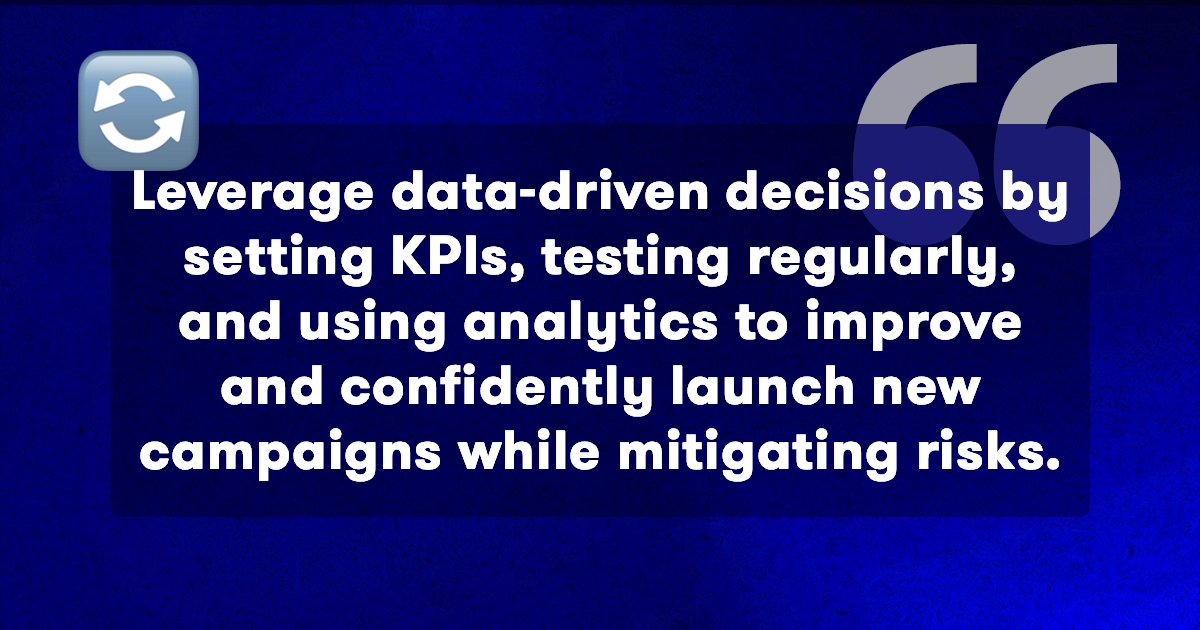
3. Develop a Distinct Product Selection
Even though the importance of branding can’t be overstated, in the end, your store is still selling products. To figure out how to be successful on Shopify, you’ll need to have products that match your brand experience and overdeliver on your promises.
One part of that is simply doing your due diligence and thoroughly researching suppliers, product selection, and pricing. But an equally important part is getting a feel about where the market is heading and getting ahead of the trend with the products you put at the forefront of your store.

4. Showcase Authentic Customer Stories
No matter how sleek your messaging, it will never match the authenticity and unique perspective of your customers. That’s why if you want to learn how to grow a Shopify store, you should have a plan for featuring as many customer stories as you can from the very beginning.
By having testimonials, reviews, and user-generated content lead your marketing efforts, you’ll have a much easier time getting people to believe your brand delivers on its promises. Plus, your customers will help show the real-world impact of your products, sharing their experiences in their own words, in a language your audience understands and appreciates.

5. Provide Outstanding Customer Support
Customer support is something you can’t develop as you go. You need to have a strong customer support and success process before you even make the first sale. That’s because the way you handle issues early on will play a vital role in your brand’s reputation, either propelling you forward or staining your brand in the eyes of new prospects.
The best customer support teams don’t just react to problems as they arise. They take a proactive approach and look for ways to get ahead of problems before they arise, continually asking customers for feedback and trying to exceed expectations at every step.
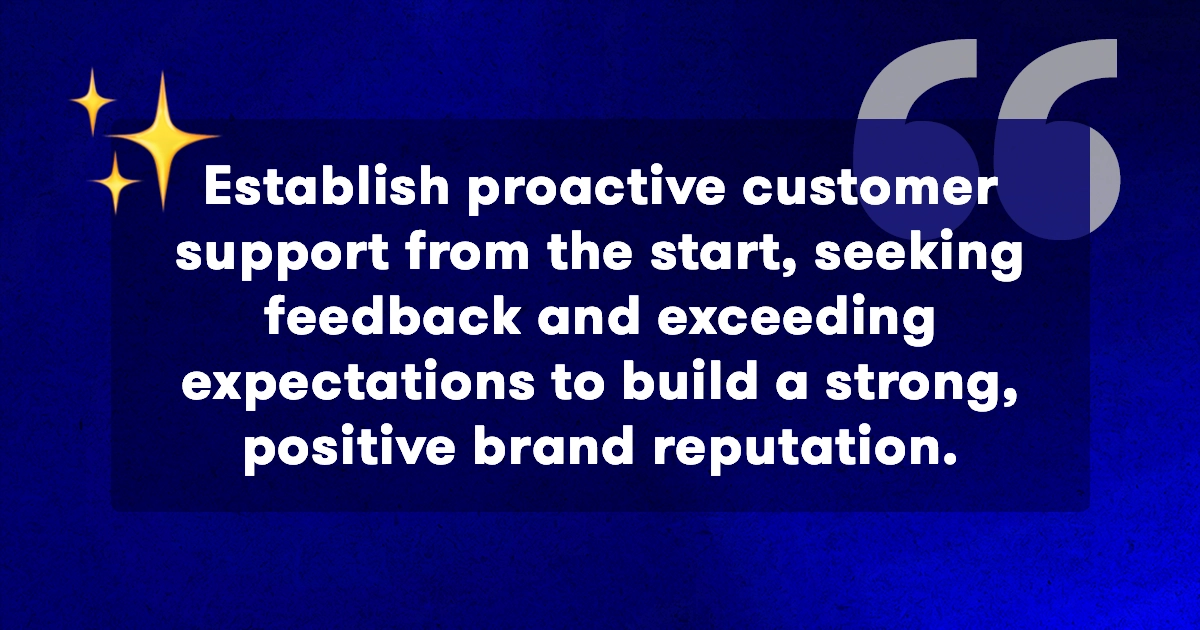
6. Build Communities on Social Media
Social media marketing in 2024 should go well beyond sharing a few posts across your platforms. You should use social media as a community-building tool where it’s easy to nurture conversations and get people to participate in creating content around your brand.
In fact, user-generated content should be at the center of your social media strategy. You should encourage customer storytelling by running UGC contests, creating viral campaigns around customers using your product, and fostering an image that connects your brand with the values and lifestyle of your target audience.

7. Prioritize Customer Lifetime Value
As you’re figuring out how to start a successful Shopify store, your first focus will be on attracting new customers. But you can’t expect to succeed in the long run by relying on acquisition strategies only. If you want to improve your margins, maintain a steadier cash flow, and grow faster, focusing on retaining customers should be a top priority.
The good news is that if you take the time to develop an effective customer experience strategy, getting people to come back will be much easier. But you should also utilize loyalty programs, personalized marketing, and brand advocate communities to get people to stick around for longer.
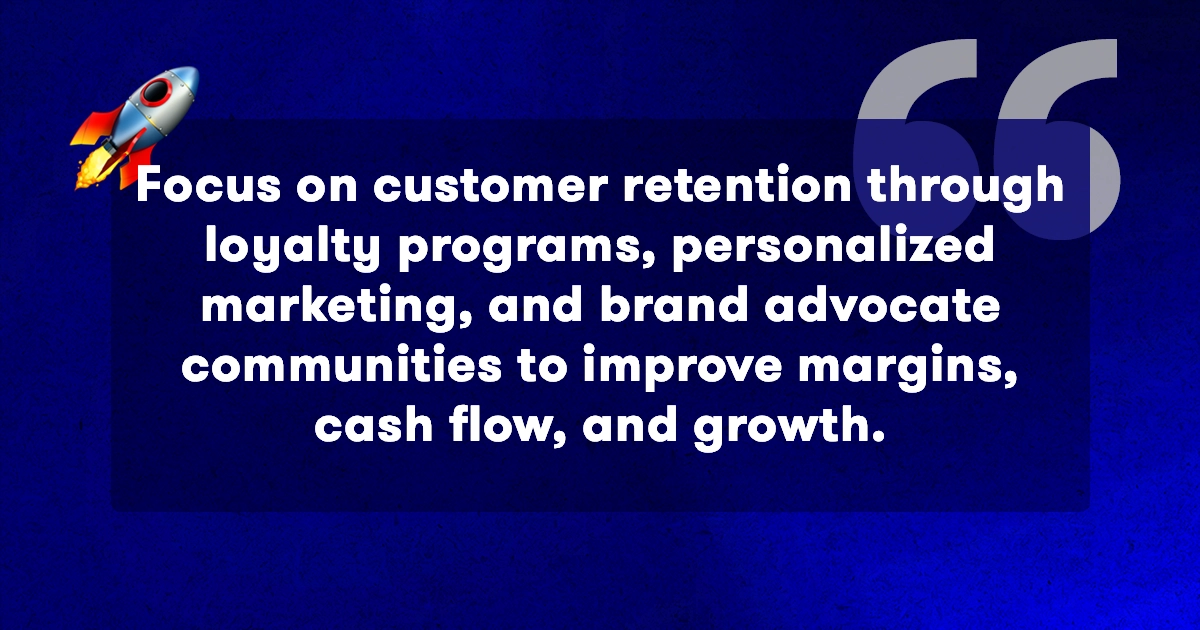
8. Establish Yourself as a Thought Leader
The most successful ecommerce stores don’t just provide products. They take their customers by the hand and guide them through obstacles, helping them achieve the outcomes they want. The products are just tools that empower people to reach their goals, which also means that customers are likely to buy multiple products as they progress in their journey.
But how can you achieve that? By becoming a thought leader in your field. You can:
- Create a comprehensive content strategy, developing blog posts, white papers, and videos around topics your audience cares about. Focus on solving specific problems and answering questions your audience has.
- Host webinars and workshops where you talk with industry experts about your field, taking an in-depth look into problems and discussing actionable steps and approaches.
- Branch out in your content marketing by getting your articles featured in industry-leading publications, which will not only position you as an authority but will also give you access to new audiences.
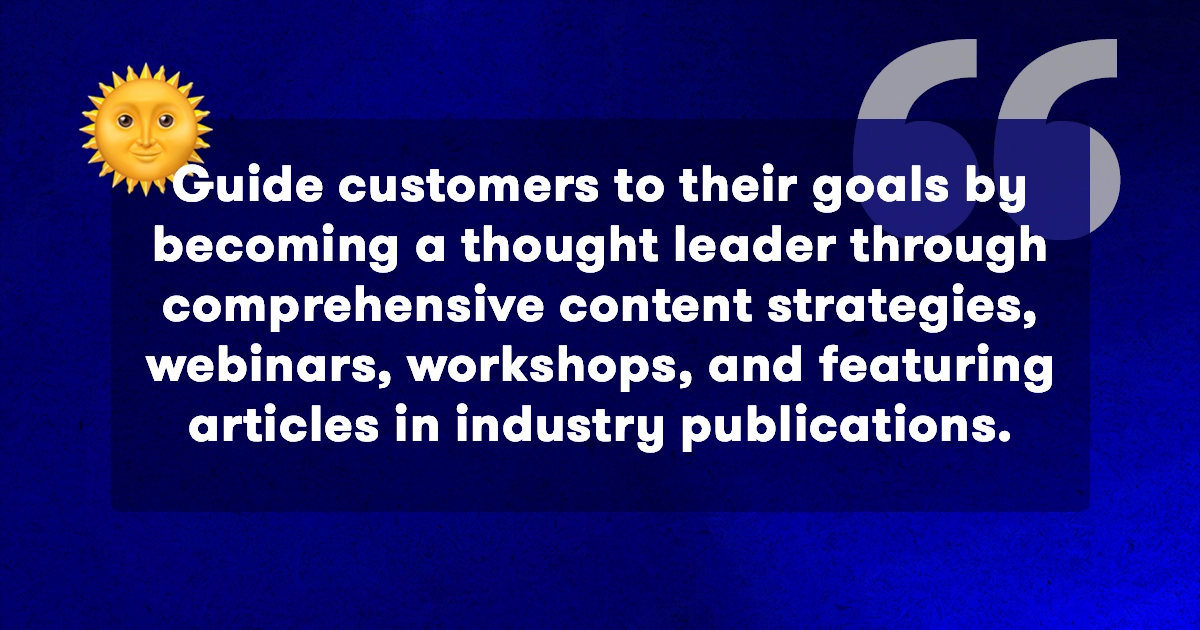
9. Don’t Get Complacent in Your Marketing
A successful ecommerce store needs to use a combination of SEO, paid advertising, and partnerships to be successful. But to stand out and grow faster than your competitors, you need to be willing to experiment with new approaches and leverage trends before others can catch up.
A while back, ecommerce stores that embraced influencer marketing saw amazing results and were able to get a flood of new customers. More recently, brands that leverage TikTok videos and Instagram Reels saw great results with introducing their products to new customers.
Today, trends like user-generated content are becoming an indispensable part of marketing. You need to keep an eye out for new opportunities and be willing to adopt them early because the payoff can be huge.

10. Build an Exceptional User Experience
Your website is the central hub of your online store. It’s where you share your brand story, show how you helped others, and get people to buy your products. It goes without saying that creating a seamless website experience is a top priority.
But it’s not just about a smooth interface or streamlined experiences like a one-page checkout. Beyond implementing industry best practices, you need to figure out the unique needs of your audience by continually testing and implementing data-driven website personalization.
Your goal should be to create a website that’s intuitive and easy to use for anyone, but especially for the people who turn out to be your best customers.
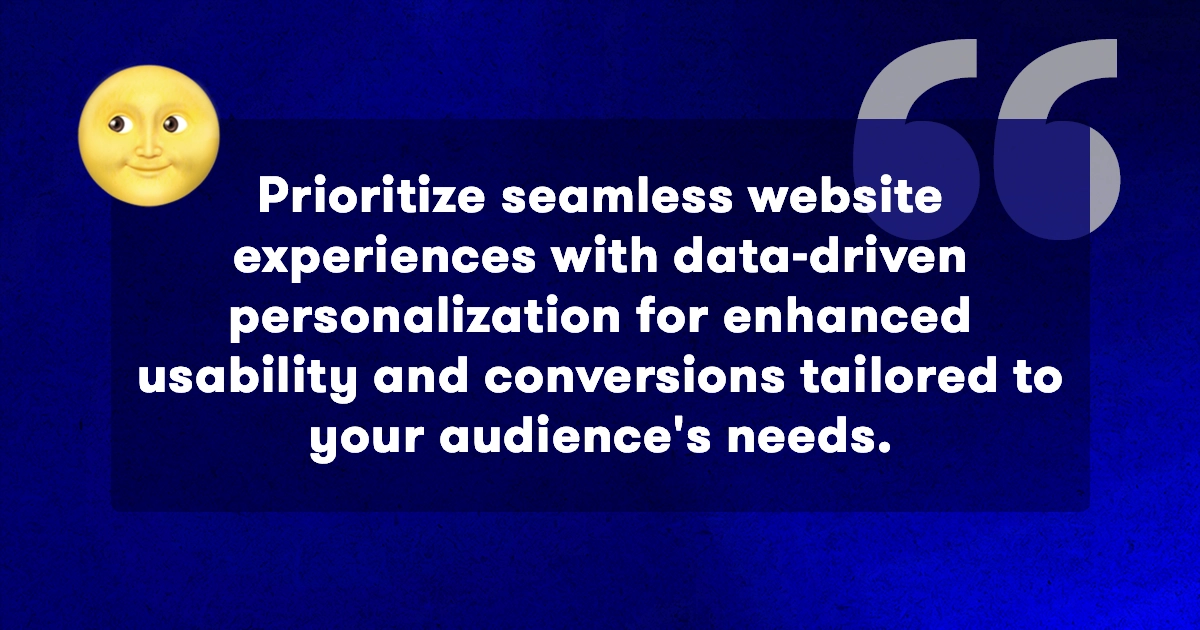
11. Uphold Uncompromising Ethical Practices
Creating a good business reputation takes years, but there are too many examples of businesses that tarnish all that work with just one costly misstep.
While it may seem like these incidents are hard to control, they are usually a result of a discrepancy between a brand’s declared values and its actions.
80% of Gen Zers based their purchases on a company’s values and mission, prioritizing brands that are eco-friendly, ethical in their production, and treating their workers well. Ecommerce stores that want to build a loyal following of younger generations must make their values a key part of the brand and actually follow through on those declared values every step of the way.
Whether it’s making sure your products come from ethical sources, minimizing the environmental impact of your supply chain, or sourcing materials that are sustainable, make sure you take actual steps to stand behind your values if you want to avoid being accused of greenwashing.
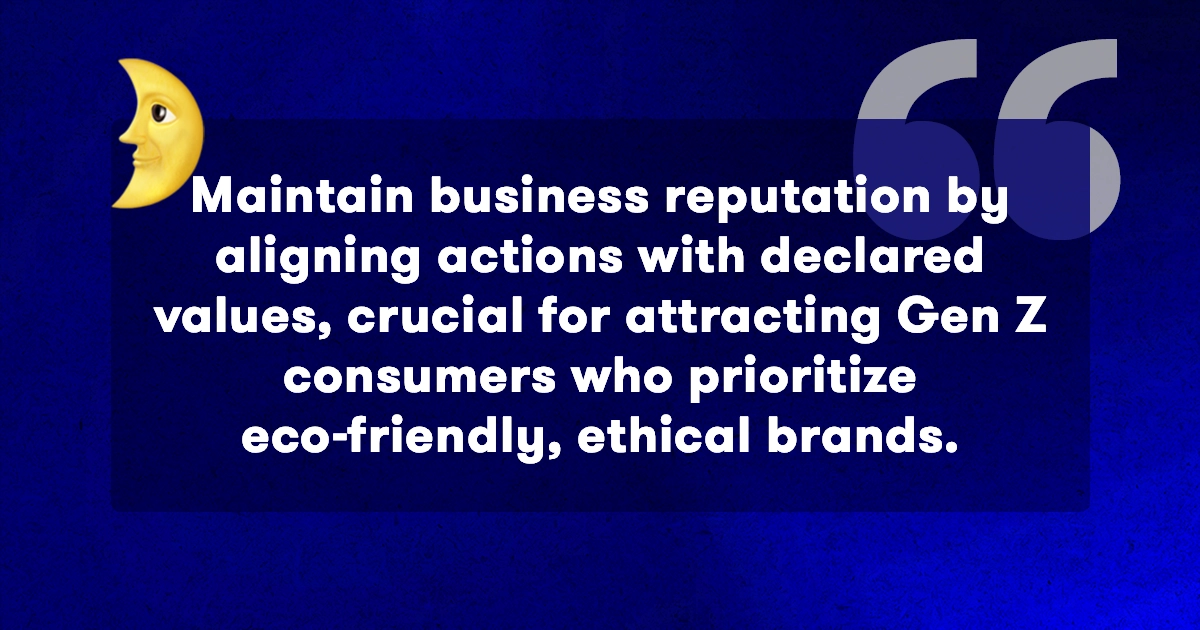
12. Streamline the Fulfillment Process
Getting customers to make a decision to buy is hard enough. So when they finally add your products to their cart and are ready to buy, don’t compromise the sale by introducing sneaky shipping fees or complicated pricing models.
Your job is to simplify and streamline every part of your customer experience, and that includes order fulfillment. You should:
- Be completely transparent about your shipping policies and let your customers know upfront how much they’ll pay in total. It’s a good idea to provide as much information as possible, including estimated shipping times.
- Make your shipping fast and reliable by partnering up with reliable logistics providers or using the Shopify Fulfillment Network.
- Be proactive in your communication with customers, providing them with detailed information about every step of the fulfillment process and sending regular updates about its status.
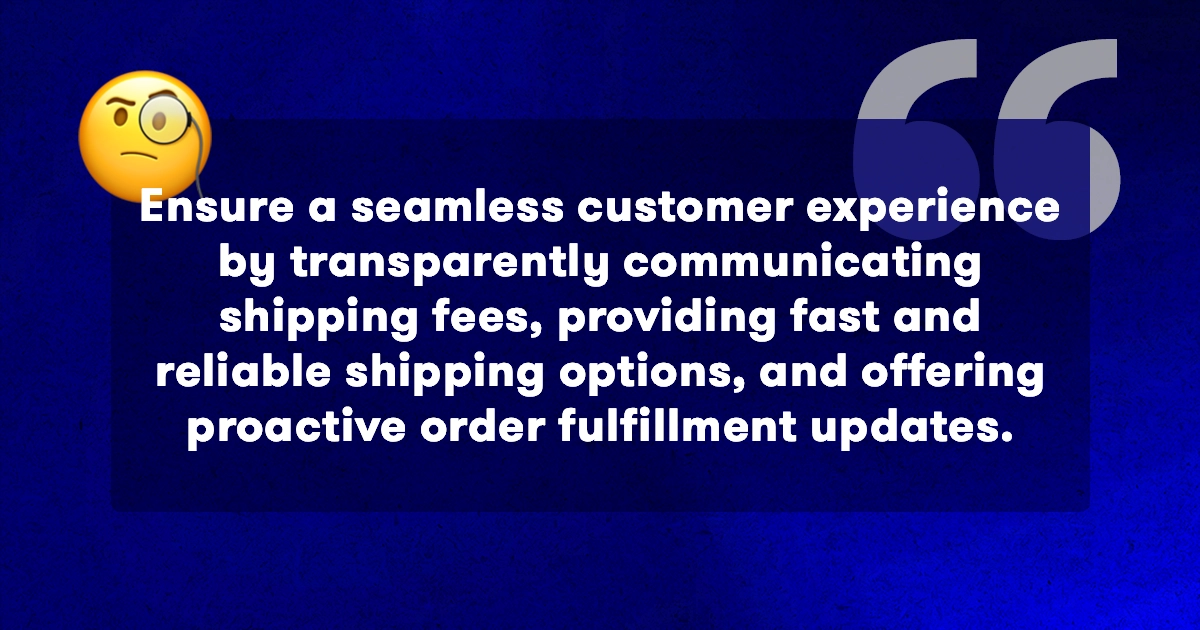
Bottom Line
Shopify has made the world of ecommerce more accessible than ever. Today, almost anyone can open their own online business and start selling products worldwide. But while getting started is easy, achieving sustainable results is something that only a small minority of the stores manage to achieve.
But even though figuring out how to be successful on Shopify is a tough task, implementing the Shopify tips above can help you create a business that people will not just want to buy from but will actively promote themselves.
Head of Content
After bouncing around tech start-ups and university literature programs, Joe has finally settled down as Billo’s Head of Content. Joe now spends his days writing ads about ads, teaching clients how to craft killer content, and combing through our web copy with a bold red Sharpie.

Authentic creator videos, powered by real performance data
22,000+ brands use Billo to turn UGC into high-ROAS video ads.
17 Best Apps For Amazon Sellers
Today, there are over 9.5 million Amazon sellers (that’s more [...]...
Read full articleHow To Sell On TikTok Shop: The Ultimate Guide To Launching and Growing Your Online Store
Pinterest and Facebook started the ball rolling on social media [...]...
Read full articleeCommerce Photography 101: All You Need to Know About Taking the Perfect Product Shots
Imagine shopping online and stumbling upon two identical products, but [...]...
Read full article



